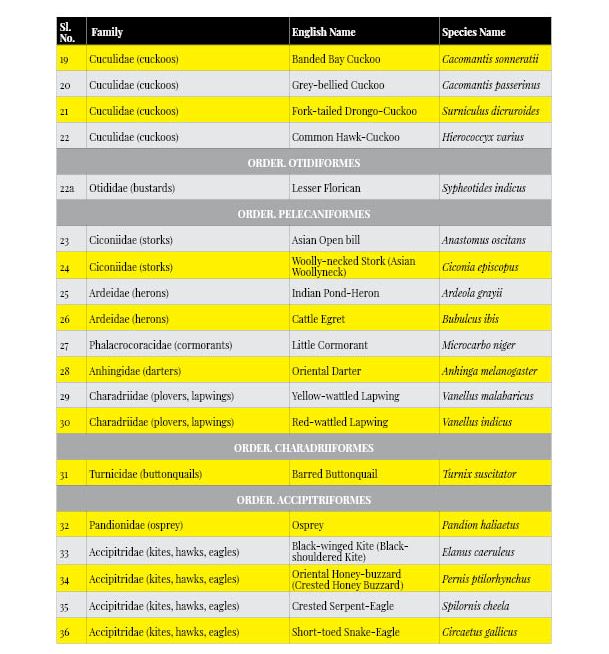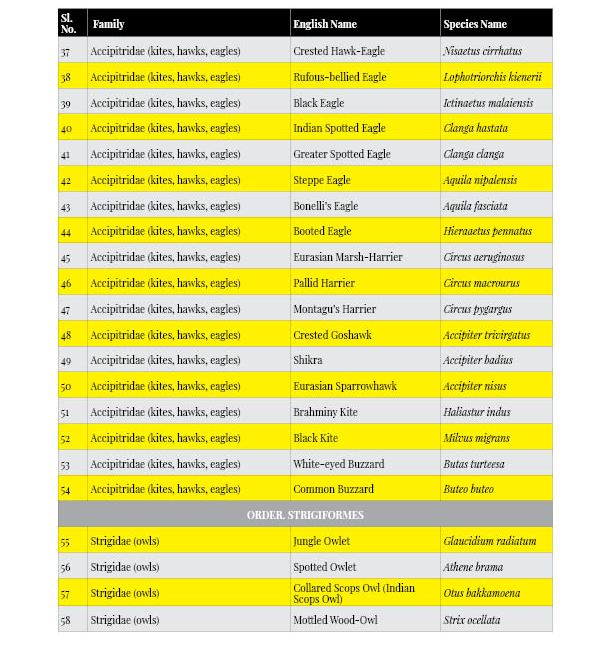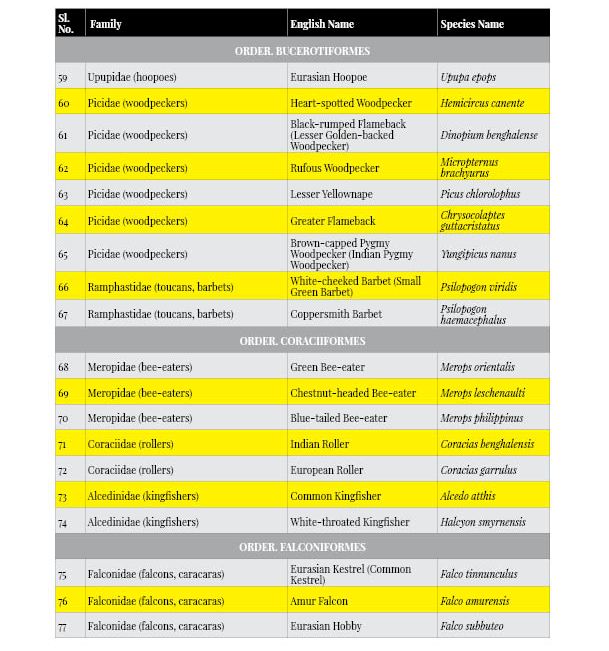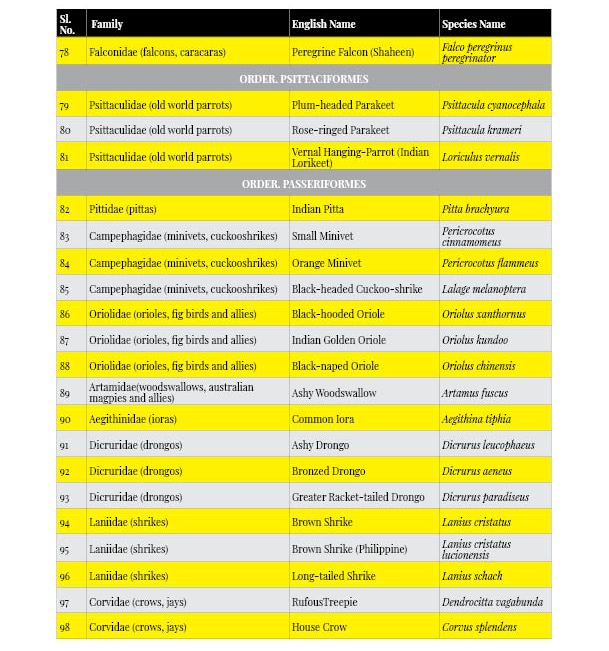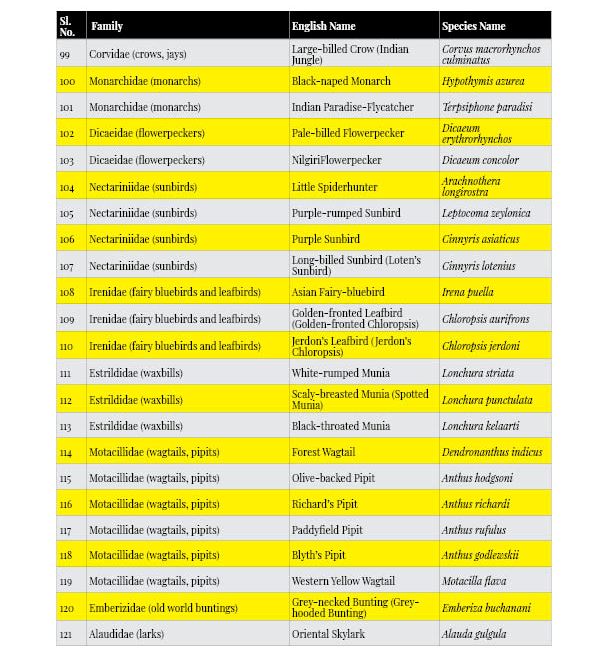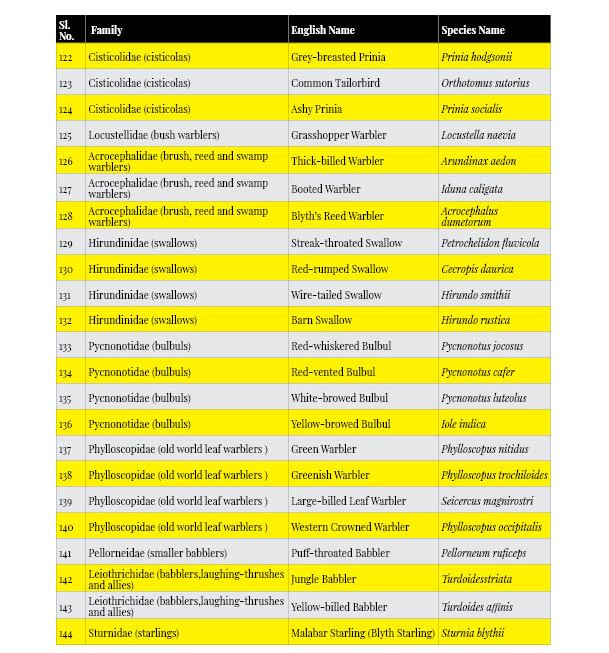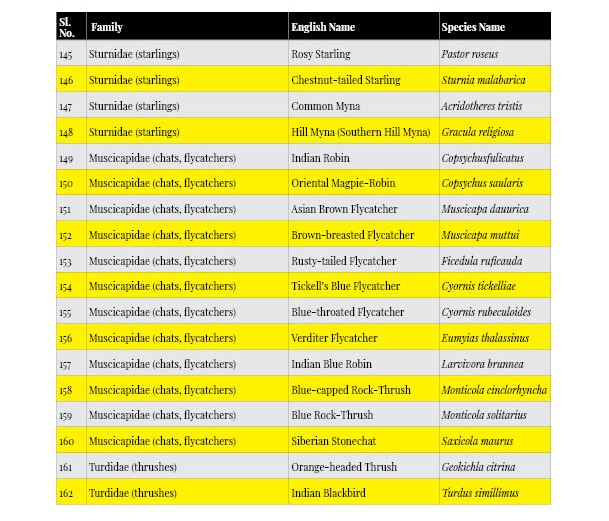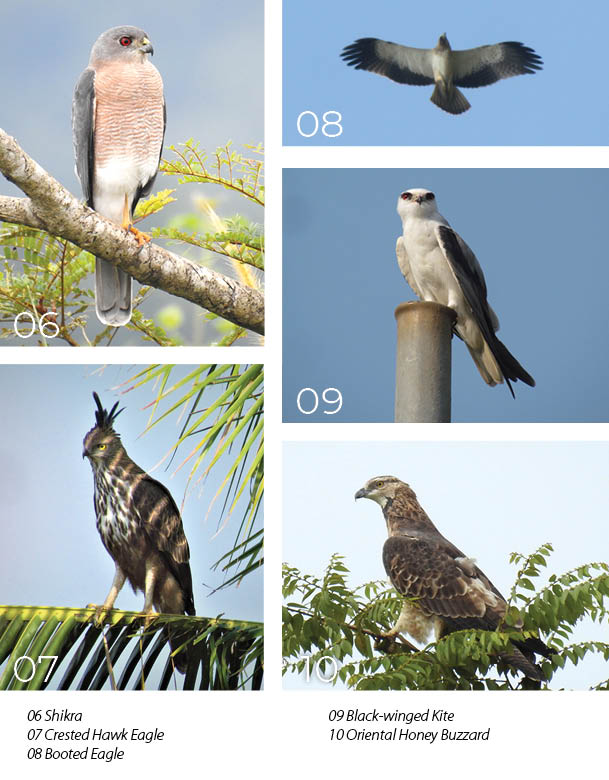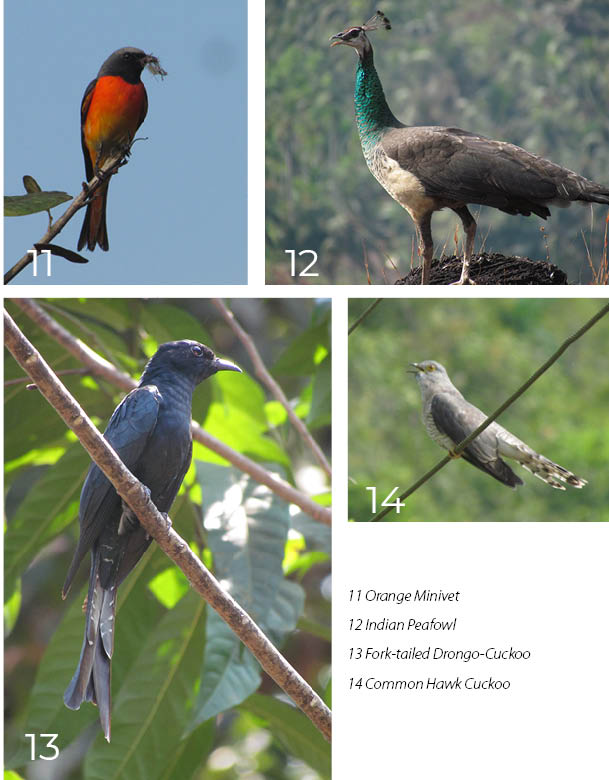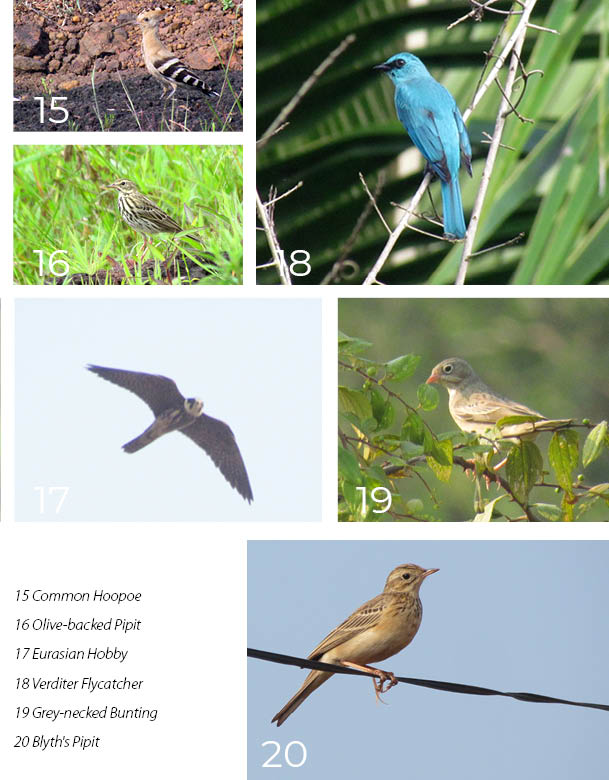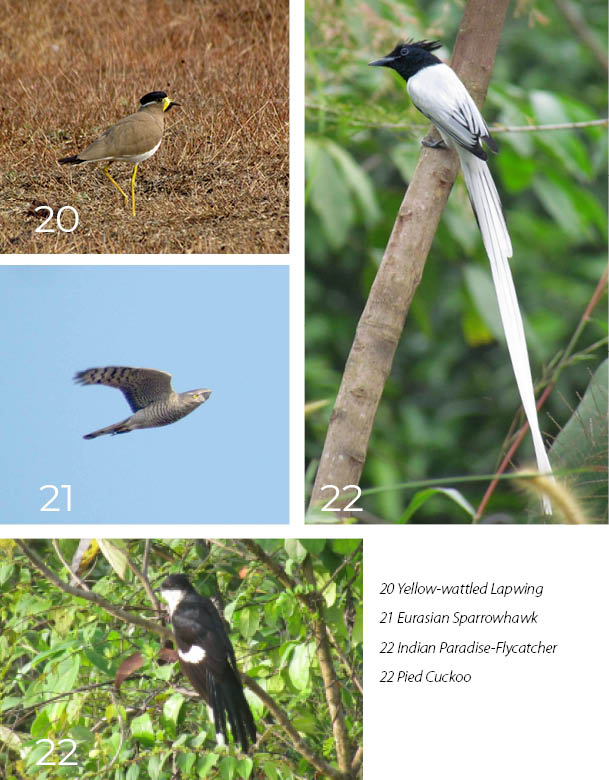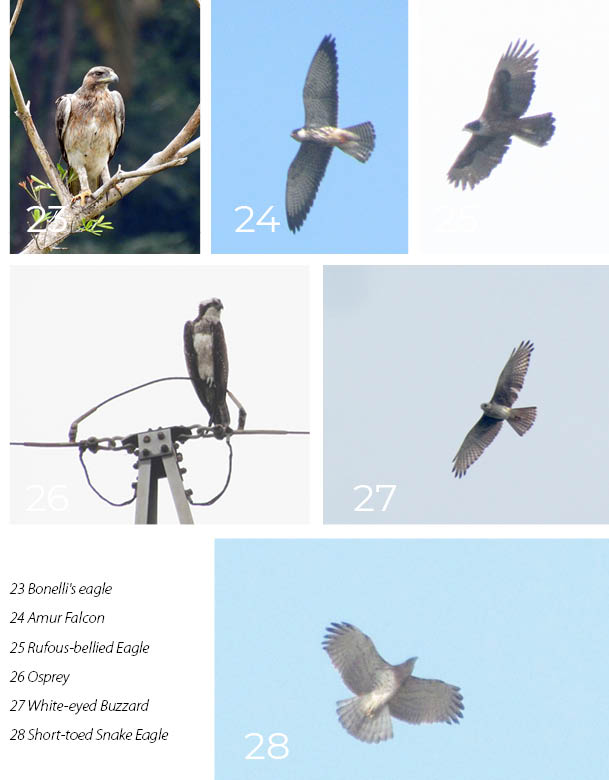Introduction
Kozhikode district in north Kerala has diverse habitats endowed with parts of the Western Ghats viz., laterite hills in the midlands, wetlands, streams, rivers, estuaries in the coastal area and a long stretch of sea shore. Ponkunnu hill is a midland laterite hillock surrounded by homesteads and cultivation. It is one of the hotspots in terms of avian diversity in the district. Standing atop the hill, visitors can enjoy a 360° view of the entire Kozhikode district including Kozhikode city, the Western Ghats and the Arabian Sea.
Ponkunnu hill is the source of drinking water for the surrounding villages. Water is distributed through the drinking water project of Kakkur Grama Panchayat and the villagers near Ponkunnu never have had to suffer water scarcity even during the hot summer months.
This laterite hillock, covered in mist, is very beautiful during the rainy season and early winter and on clear days, and watching the sunrise and sunset is a great experience. Korappuzha River and the Kottooli wetland system adjacent to Ponkunnu are also major contributing factors to the biodiversity of this location.
Study Area & Habitat
Ponkunnu Hill is a revenue land situated in Kakkur Grama Panchayat in Kozhikode district, 20km away from Kozhikode city, located at 11.40° N latitude and 75.81° E longitude (Figure 1 & 2). The study area has an extent of 5 Km2 in the east-west direction, including the cultivated land and homesteads in the immediate vicinity of the hill. The highest altitude is 280 meters and the lowest point at 80 metres. Compared to the southern side, the northern side of Ponkunnu has a sharper incline. The surroundings are well-wooded and the nearby Coconut Cocos nucifera and Arecanut Areca catechu plantations are ideally suited for the roosting of raptors and other birds. A temporary road constructed in the recent past for mining purposes is very useful to travel up to the top of the hill for birding.
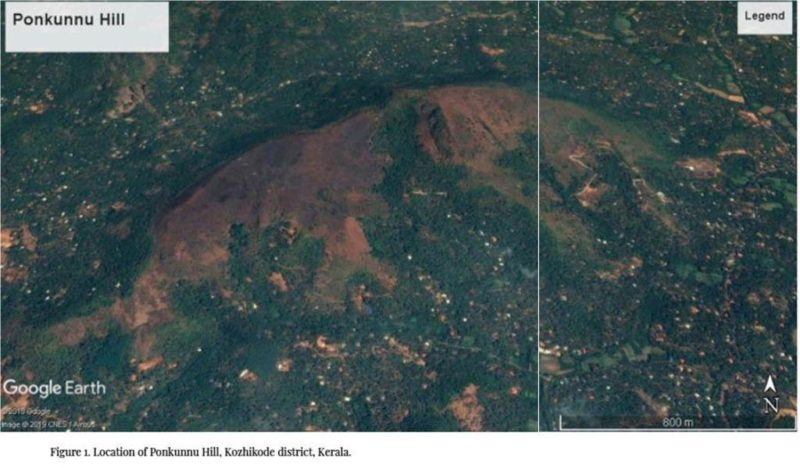
The vegetation of the place consists of well-wooded areas with dense undergrowth, scrub jungle, cashew Anacardium occidentale plantation on the eastern and southern slopes and a Mangium Acacia mangium plantation in the middle. These are good habitats for forest birds such as flycatchers, warblers, thrushes, spurfowl, etc. The area from top of the hill up to the western end point is dense savannah type grassland on the laterite face with isolated trees and rocky cliffs. It is a habitat well suited for pipits, stonechats, Indian Robin and Lesser Coucal.
A wide variety of medicinal plants, herbs and many larval host plants of butterflies, moths and other insects occur here. There are some natural caves of varying dimensions that may be useful for wild animals as shelter. Among these caves, one is quite large measuring up to 300 meters long and wide enough for a group of people to move around freely. The hill shelters several small mammals like Wild Boar, Jackal, Jungle Cat, Common Mongoose, Crested Porcupine, Indian Palm Civet, and Small Indian Civet. Monitor Lizard, Three-striped Palm Squirrel, rats and other small rodents, snakes, amphibians, we well as invertebrate fauna like butterflies, dragonflies, etc., are also abundant here. A Leopard was sighted here a few years ago which was believed to have attacked domestic animals and dogs occasionally.
Methodology
I visited Ponkunnu hill as a bird watcher for the first time in March 2012. From 2015, after a 2-year gap, I made regular visits and so far have visited this area around 240 times. During my field visits, I collected data by using direct visual count by walking around, using a pair of binoculars (10 x 50 and 8 x 30). Point Count method was also used especially to observe raptors. The details of all the birds seen was promptly uploaded on the eBird website after proper identification with the help of reference books (Grimmett et al. 2011; Naoroji, 2006; Sashikumar et al. 2011) and also in consultation with experienced ornithologists in the case of some doubtful species. The observation time was usually from 6.30 am to 11.30am and from 3pm to 5.30 pm. During birding, photographs were taken using Digital Super-zoom camera. For the purpose of “Patch Birding” (eBird, 2019a) from July 2017 to July 2018, I visited the area regularly on all Sundays (and as far as possible on week days too) and collected the data of birds across all seasons. Personal communication and direct interaction with natives also helped in the collection of information on birds.
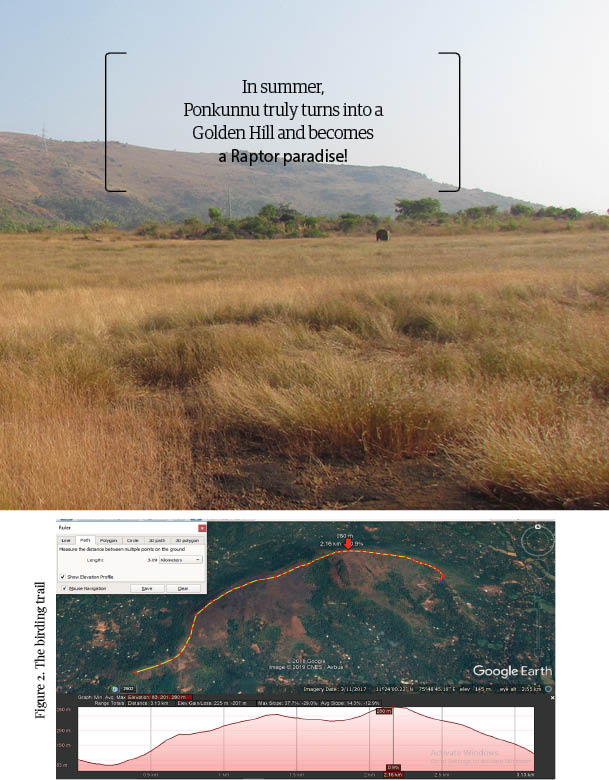
Results & Discussion
In all, 162 species of birds belonging to 49 families have so far been recorded from the study area during the seven years of study (Table 2). This forms 43% of birds reported from Kozhikode district so far (372) (eBird, 2019b) and 30% of Kerala state (525) (eBird, 2019c). Highest species richness was recorded for the family Accipitridae (n=27) followed by Muscicapidae (n=12) (Figure 3). 6 species of globally threatened birds occur here.
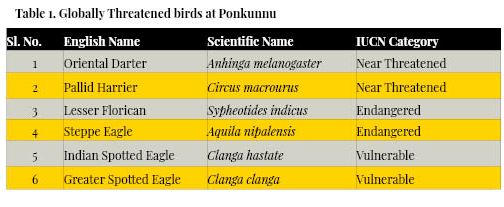
Out of 162 birds, 107 were residents (66%) and 55 migrants (34%). 17 species among the 162 have been new additions to the bird fauna of Kozhikode district. The photographs of 133 species were taken during the study. A total of 626 photos were uploaded along with the 361 checklists to the eBird website.
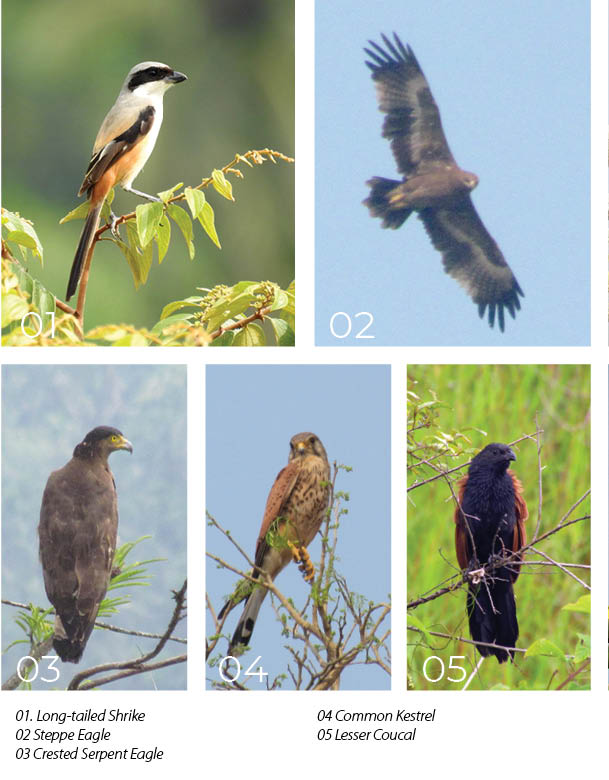
The grassy hill top of Ponkunnu is an ideal vantage position to watch soaring raptors. The 27 species of raptors have been documented from Ponkunnu hill constitutes 87% of the total number of raptors so far reported from Kozhikode district (31) and 58% of Kerala state (46) (eBird, 2019b, 2019c) (Figure 4). There is also good availability of prey like rodents, snakes, birds and other fauna, which attract raptors to this place. Thus, Ponkunnu can be considered as an important raptor hotspot in Kerala with 24 species of diurnal birds of prey observed in the year of 2018 alone, closely followed by Gumpe Hill situated in Kasargod district with 22 species (eBird, 2019d). On a single day (1 December 2017. eBird. 2019e), 18 raptors belonging to six species were observed including nine Oriental Honey-buzzards Pernis ptilorhynchus (different morphs), two Black Eagles Ictinaetus malaiensis, two Booted Eagles Hieraaetus pennatus (dark and pale morphs), three Brahminy Kites Haliastur indus, one Eurasian Kestrel Falco tinnunculus, one Peregrine Falcon Falco peregrinus peregrinator (Shaheen Falcon).
The average number of bird species recorded was found to be 77 in a month and 100 in a year. The minimum number of bird species was observed during the month of June (47) and the maximum in December (122) (Figure 5).
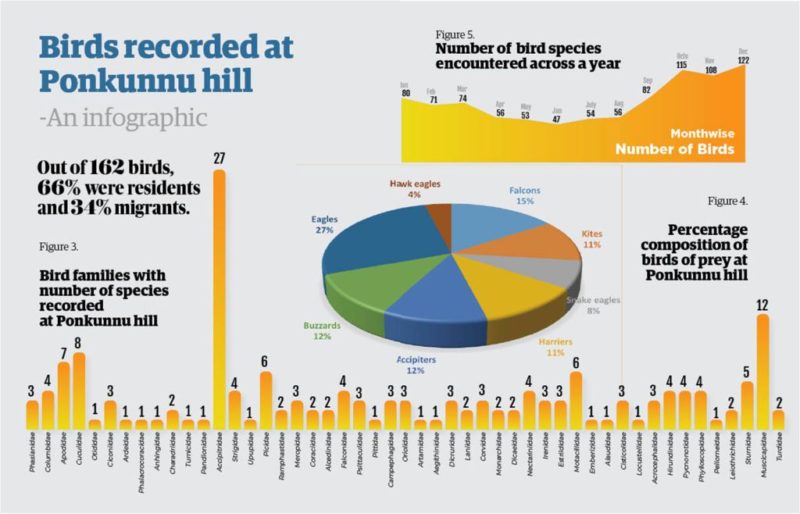
The rich biodiversity of Ponkunnu hills largely remained unnoticed till 2012 due to the scarcity of scientific studies or even amateur observations. It was my privilege that I could introduce this unknown birding spot to the birdwatchers of Kerala based on my regular monitoring since 2015. A walk from the east end to the western end gives ample opportunity for observing the birds and for taking good photographs of birds. The best season for birding at Ponkunnu is from September to March like any other hotspot in Kerala but the month of December is the richest in terms of sightings. This is the ideal place for the close observation of avian species like swifts, swallows and raptors.
Ponkunnu was selected for a pilot study by SACON (Salim Ali Centre for Ornithology & Natural History) Coimbatore, as part of a study of various biodiversity hotspots within Kerala and to assess their bird wealth to be included in the IBA (Important Bird Areas) list. A Lesser Florican Sypheotides indicus (Sl No 22a Table2) which was found injured and rescued by bird lovers from Kozhikode city limits in November 2017 was given proper care and treatment. After the bird regained health, it was released at Ponkunnu (Figure 8) , considered as the most suitable habitat, on 12 December 2017 under the supervision of ZSI Kozhikode in the presence of bird lovers (Bibin et.al. 2018)
The Malabar Natural History Society (MNHS) has included the protection of these hills as one of their foremost agendas. It is heartening to note that Kakkur Grama Panchayat has come forward for the protection of Ponkunnu Hills.
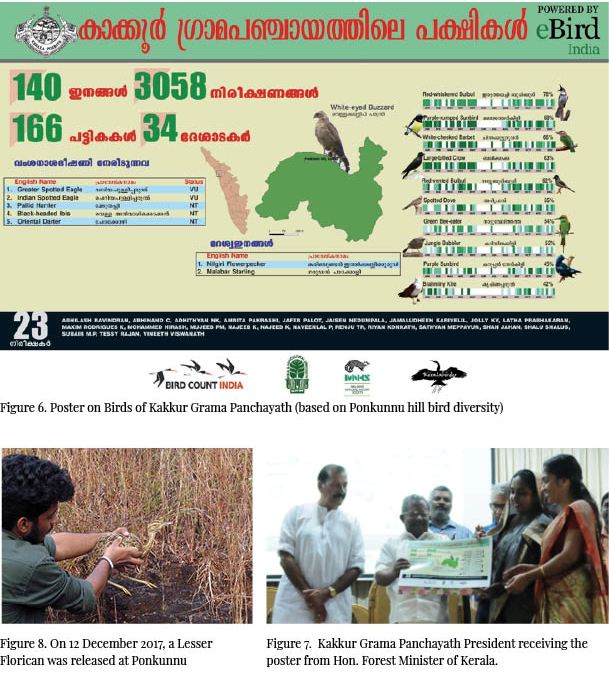
Kerala bird monitoring group, in association with Kerala Forest & Wildlife Department, Kerala Agricultural University (KAU), MNHS and Bird Count India has compiled posters of the birds of 14 Panchayaths representing the 14 different districts of Kerala, based on eBird data, highlighting the threatened and endemic bird species. These posters were released in a public meeting by the Forest Minister where he presented the poster to the representatives of the respective panchayaths. Poster on the bird diversity of Kakkur Panchayath of Kozhikode District based on the data generated from the present study was shared at this event (Figure 6 & 7).
Threats
Like in many other unprotected areas, the Ponkunnu hills also is under threat from the unmitigated dumping of plastic waste and garbage, uncontrolled tourism, man-made forest fires, harvesting of grass and shrubs for fodder, etc. The unchecked felling of tall trees also has been noticed.
Recommendations
1. The government as well as the local governing bodies and the general public of Ponkunnu
should be made aware of the rich biodiversity of this place and the need to conserve it.
2. A detailed faunistic and floristic estimation of Ponkunnu hills should be carried out with the technical guidance and collaboration of MNHS and Kerala State Biodiversity Board with the support of Kakkur Grama Panchayat.
3. The possibility of converting these hills to a Conservation Reserve for its bird diversity especially that of raptors should be explored.
4. Construction, mining and other developmental activities should be strictly banned.
Acknowledgements
I sincerely thank my friend V. K. Muhammed Hirash (MNHS), for his inspiring presence on several bird walks during this study. I also thank Sathyan Meppayur, President MNHS Kozhikode, for all the support and guidance; I also thank P. Naveenlal (MNHS), and K. Abdul Riyas, Assistant Professor (Zoology), for technical and scientific help. My special thanks to Dr. Jafar Palot, C. Sashikumar, Praveen J. and Dipu Karuthedath. And last but not the least, I wish to express my sincere thanks to Vijesh E. V. Chedichery, members of MNHS, members of Calicut Birding Club, members of Kozhikode Birders, Kakkur Grama Panchayath and all birders who visited Ponkunnu Hill.
References
- Bibin Lal, Tessy Rajan, Amrita Prakash, Vishnudattan, N. K., Suvina, E. P. &
Muhamed Jafer Palot. (2018). Occurrence of Lesser Florican Syphiotides indica (Miller), Kozhikode district, Kerala, India. Malabar Trogon, 16(1): 40-41. - eBird. (2019a.) https://help.ebird.org/customer/en/portal/articles/1006845-yard-and-patch-guidelines Accessed on 21 June 2019
- eBird. (2019b). https://ebird.org/region/IN-KL-KZ?yr=all Accessed on 21 June 2019
- eBird. (2019c). https://ebird.org/region/IN-KL?yr=all Accessed on 21 June 2019
- eBird. (2019d). https://ebird.org/hotspot/L5069720?yr=all&m=&rank=mrec Accessed on 21 June 2019
- eBird. (2019e). https://ebird.org/view/checklist/S40835552 Accessed on 21 June 2019
- Grimmett, Richard, Inskipp, Carol and Inskipp, Tim. (2011). Birds of the Indian Subcontinent. Helm Field Guides. 528pp. Oxford University Press & Christopher Helm. London.
- Naoroji, Rishad. (2006). Birds of prey of the Indian Subcontinent. 692pp. Om Books International. New Delhi, India.
- Praveen J. (2015). A checklist of birds of Kerala, India. Journal of Threatened Taxa, 7(13): 7983–8009.
- Sashikumar, C., Praveen J., Palot, Muhamed Jafer and Nameer, P. O. (2011). Birds of Kerala: status and distribution. 835pp. DC Books. Kottayam, Kerala.

